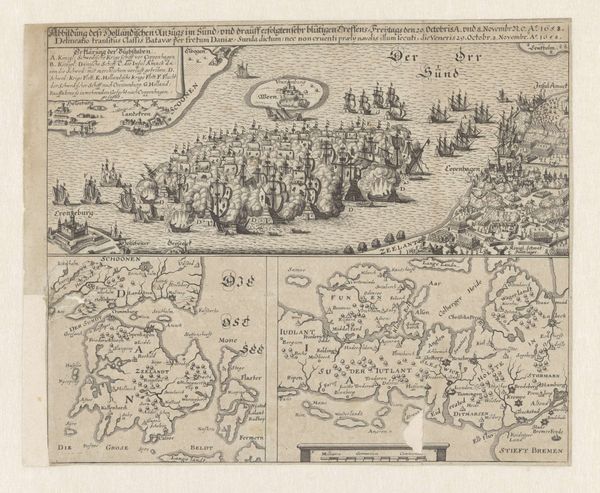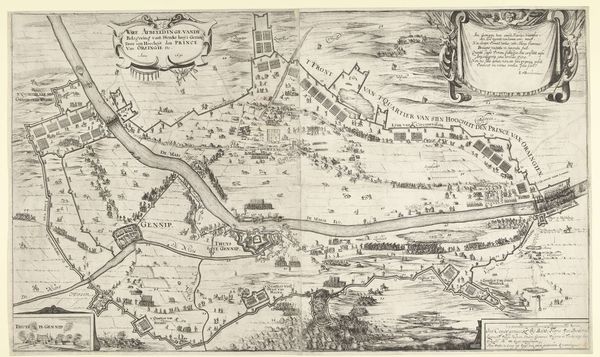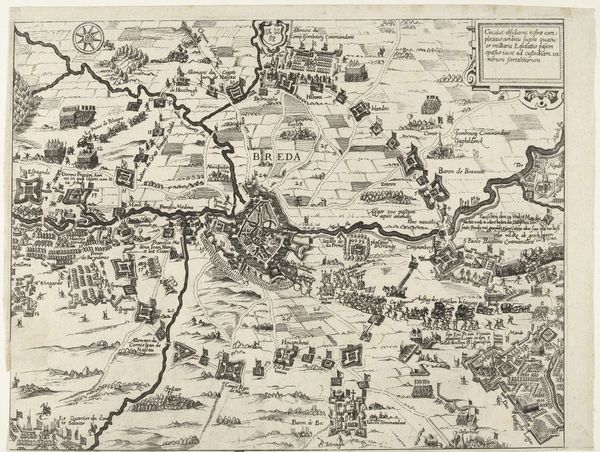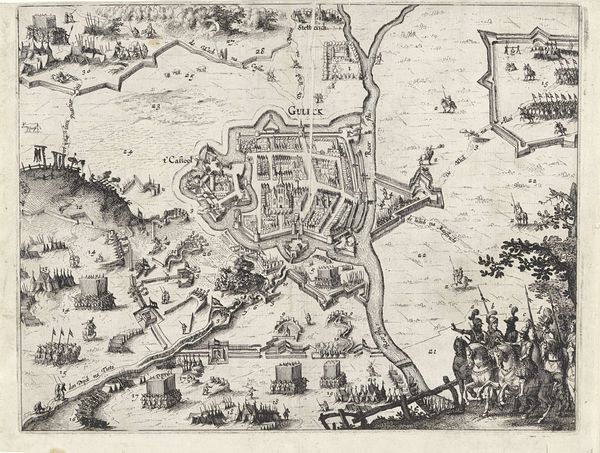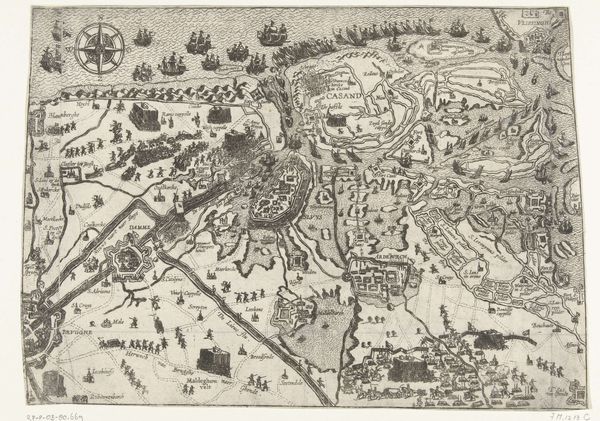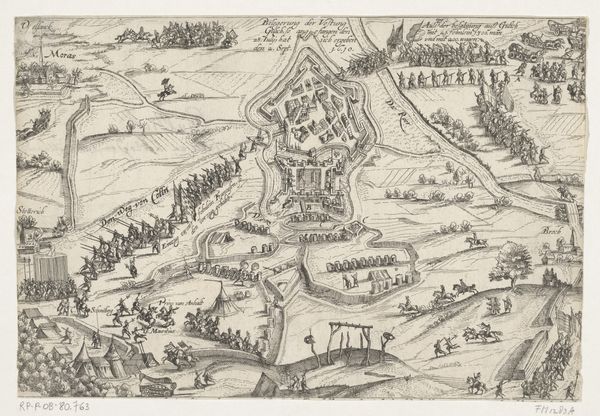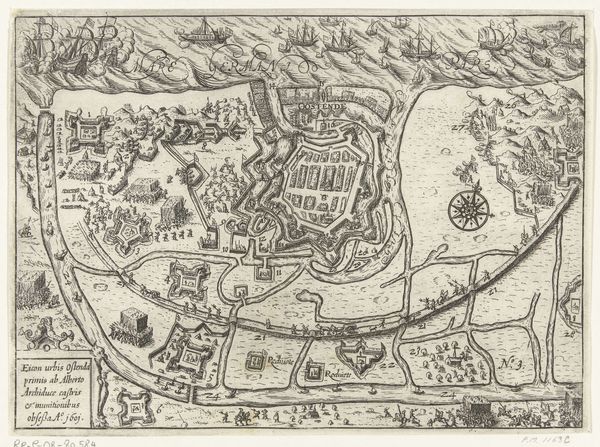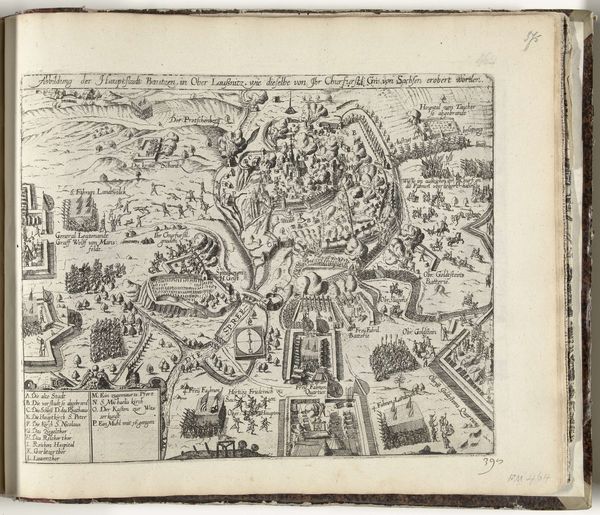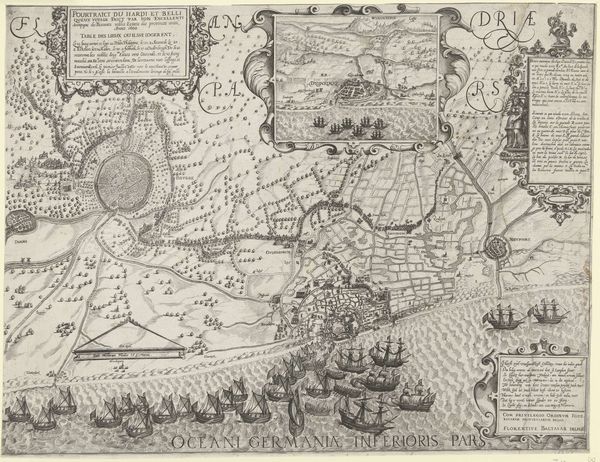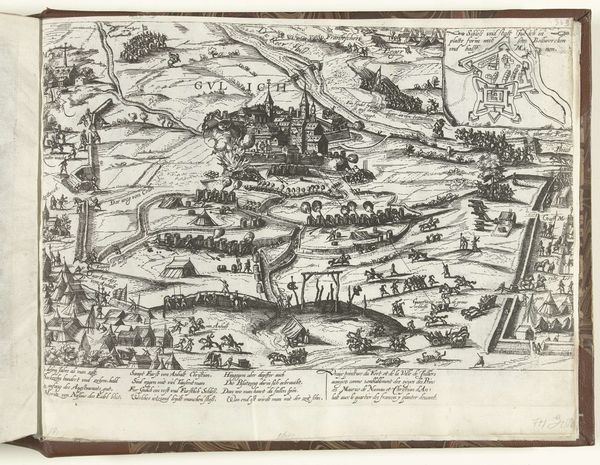
drawing, print, etching, ink, engraving
#
pen and ink
#
drawing
#
ink drawing
#
pen drawing
# print
#
pen sketch
#
etching
#
personal sketchbook
#
ink
#
ink drawing experimentation
#
pen-ink sketch
#
pen work
#
sketchbook drawing
#
cityscape
#
genre-painting
#
history-painting
#
academic-art
#
sketchbook art
#
engraving
Dimensions: height 305 mm, width 370 mm
Copyright: Rijks Museum: Open Domain
Curator: This print, titled *Beleg van Breda door Spinola, 1625,* depicts the siege of Breda between 1625 and 1627. It is attributed to Frans Hogenberg and employs pen and ink. What are your initial observations? Editor: My immediate impression is of organized violence. There's an unsettling sense of cold calculation, evident in the almost clinical way the landscape is rendered. This isn't a romantic battlefield scene; it's a strategic visualization of power and domination. Curator: Indeed, the topographical precision is remarkable. The emphasis on fortifications and troop deployments speaks to a detached, almost architectural appreciation of warfare. Note the consistent line weight, how it flattens perspective to emphasize the graphic quality. Editor: But that "graphic quality" normalizes the brutality! It sanitizes the human cost. The Siege of Breda wasn't just a strategic game; it was about imperial ambition clashing with local resistance, the Dutch fight for independence against Spanish forces, creating profound disruption in civilian life and community. Where are the people in this picture, and what perspectives are prioritized through this careful, detached illustration of colonial power? Curator: An astute observation, pointing to the possible use of abstraction. The map-like depiction isn’t intended to highlight suffering, but to present a cogent view of a strategic maneuver. See how each structure, from fortress to river, is rendered with similar precision. We might consider how it communicates objective control. Editor: Perhaps objective control serves specific interests? It obscures the voices of those most affected by war. Consider the religious and economic factors motivating both sides. Whose interests does this ostensibly neutral "view" of the siege serve? Is there, potentially, an intended dehumanizing impact to presenting a theatre of conflict like this, stripping the people who suffered out? Curator: You urge a reading against the grain. We might also note the elegant lines, the compositional balance, all existing as formalized elements with significant bearing on understanding its function and aesthetics. Editor: I think the piece provokes questions about whose stories get told and how certain images may lend themselves to supporting narratives of control and justification during times of great upheaval and loss. Curator: Precisely, a deeper probe reveals the art’s power to both record and recast historical narratives. Editor: Indeed. Thank you, this perspective into visual manipulation really helps understand not only the siege itself, but also the artistic process and political undertones inherent within historical artwork.
Comments
No comments
Be the first to comment and join the conversation on the ultimate creative platform.
